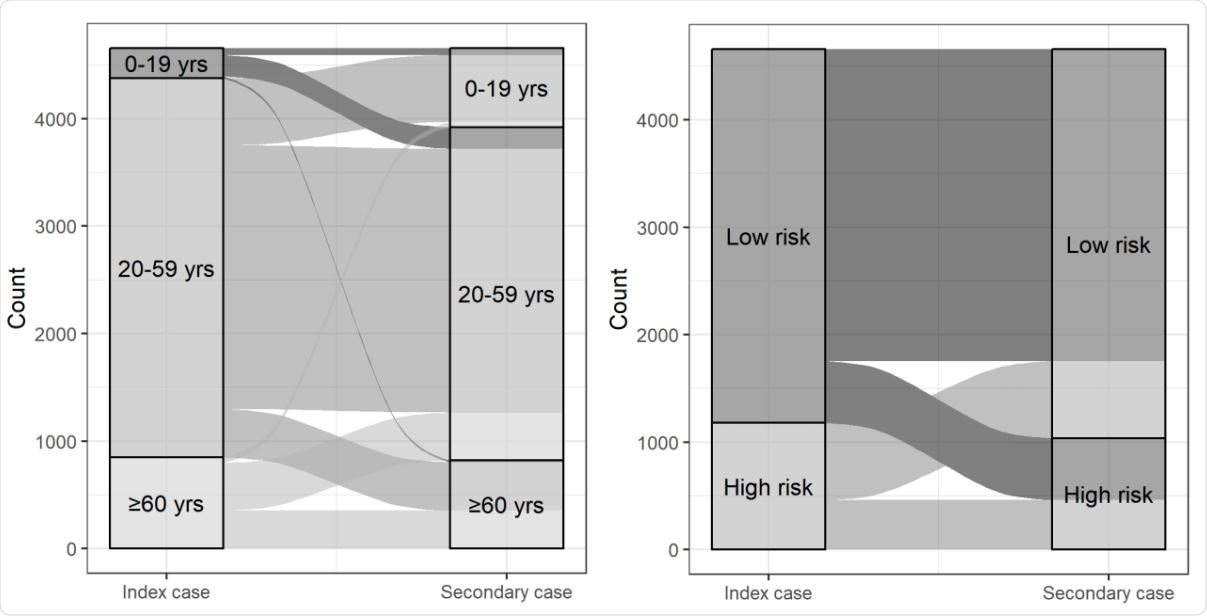As the coronavirus disease (COVID-19) pandemic continues to spread across the globe, more information emerges on how the virus spreads. Household transmission of the severe acute respiratory syndrome coronavirus 2 (SARS-CoV-2) has been flagged as one of the major sources of the spread of COVID-19.
The secondary attack rates among household contacts are estimated to be five to ten times higher than among non-household contacts. However, it is unclear who among the household members are more likely to spread the virus.
Now, a team of researchers at Public Health Ontario and Sunnybrook Research Institute aimed to determine the factors that drive household transmission of the coronavirus. Specifically, the researchers wanted to compare the characteristics of cases in households with secondary transmission than those who did not.
The team found that longer testing delays and being male were tied to a higher risk of secondary household transmission. Also, households with more family members are more likely to experience the COVID-19 spread.
The study
The study, published on the preprint server medRxiv*, highlights how household transmission contributes to the growing number of coronavirus cases, which has now topped 43.89 million worldwide.
The team used address matching to identify all households with confirmed SARS-CoV-2 infections from Ontario in Canada from January to July to arrive at the study findings. The researchers compared the characteristics of cases in households that had secondary transmission to those that did not. To obtain the data, they used the provincial reportable disease systems entered by local public health units.
A secondary transmission happens when cases occur 1 – 14 days after the first person who had the coronavirus was identified. The team used the symptom onset date or the specimen collection date. Further, they also considered a wide range of individual-level and neighborhood-level covariates in the study, tied to household transmission.
Study findings
Overall, there were more than 38,000 confirmed COVID-19 cases reported in Ontario. After removing some cases based on the inclusion criteria, the team had more than 26,000 cases living in private households. From these, more than 18,000 cases were from households with no secondary transmission, and more than 7,900 cases were from households with the secondary transmission.
The team has found that longer testing delays and being male contribute to a higher risk of secondary transmission in the house or apartment. On the other hand, being a healthcare worker or linked to a known outbreak has been tied to lower household transmission chances.
The team also found that neighborhoods with a larger average economic family size and a higher proportion of people living in a room were tied to greater household transmission odds. This means that the more people living in a home, the higher the risk of a COVID-19 outbreak in the household.
“Our findings of higher odds of household transmission among neighborhoods with a higher proportion of multiple persons per room and multi-family households may support this hypothesis, and our association with economic family size may be capturing aspects of household crowding at the neighborhood,” the team explained.
Household transmission plays a pivotal role in the spread of SARS-CoV-2. The study recommends that it is essential for people to get tested immediately or as soon as symptoms appear. This way, they will take precautions to protect the other members of the family.
“Ideally, individuals should be tested on the day of symptom onset, as even a 1-day delay was associated with increased odds of secondary transmission. Additionally, if cases are living with other individuals, it may also be important to try to isolate in a room alone or outside the home, if possible,” the researchers said.
These mitigation strategies may be considered by public health officials to combat household transmission. Further studies should be done to focus on the role of children and the youth in household transmission.
The coronavirus pandemic has now killed more than 1.16 million people. The United States remains the hardest-hit country, reporting more than 8.77 million cases, followed by India, with a staggering 7.94 million people.
*Important Notice
medRxiv publishes preliminary scientific reports that are not peer-reviewed and, therefore, should not be regarded as conclusive, guide clinical practice/health-related behavior, or treated as established information.
